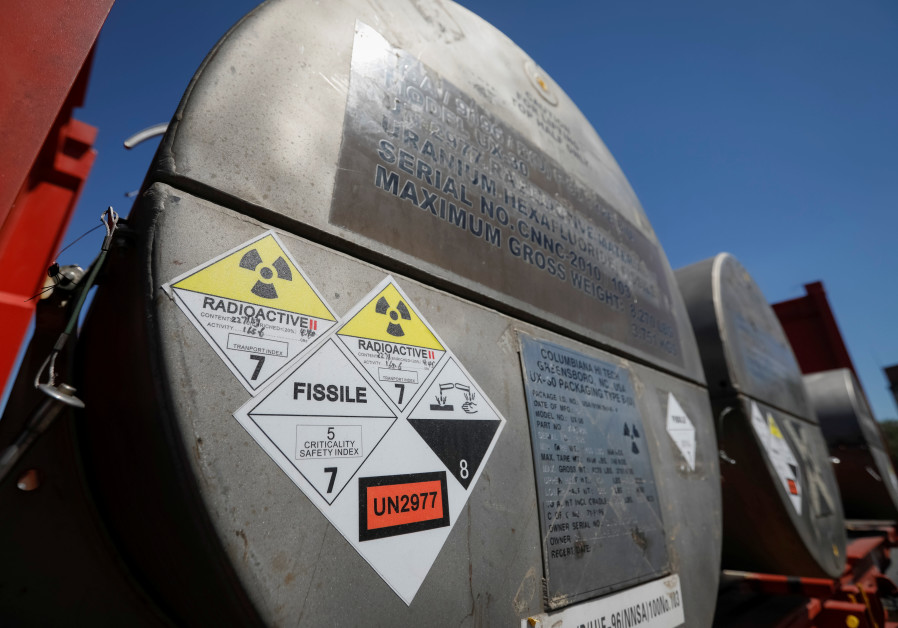Mossad leads IAEA to find radioactive material in violation of nuke deal – report

A view shows railway packages for containers with uranium hexafluoride salt, raw material for nuclear reactors, similar to the one be used for the IAEA Low Enriched Uranium (LEU) Bank. (photo credit: SHAMIL ZHUMATOV / REUTERS)
The IAEA has found signs of radioactive material that would violate the 2015 nuclear deal at an Iranian nuclear site identified to the agency by Israeli intelligence, Channel 13 reported on Thursday.
According to Channel 13, top Israeli sources revealed that the IAEA is sitting on the information and has avoided making it public to date. In April, Reuters reported that the IAEA had finally visited the secret Iranian nuclear site at Turquzabad revealed in a September 2018 UN speech by Prime Minister Benjamin Netanyahu.
Since then, all parties to the US-Iran nuclear standoff have been waiting for the IAEA’s June announcement of its findings from that visit.
During that visit, the IAEA took samples from the site and it had been expected to announce the results of the samples in June, but then did not mention the issue.
Rather, the IAEA and other parties more recently have been distracted by Iran’s open violations of uranium enrichment limits.
Some expectations had been that the IAEA had waited so long to review the site noted by Netanyahu that, by the time it came, Iran had likely already “cleaned” the site of any evidence of nuclear activity which would violate the 2015 nuclear deal.
But there have been instances in the past where the Islamic republic’s cleaning crew was not careful enough and left behind traces which inspectors picked up on.
If the IAEA found evidence of a violation, some believed the whole game could change, with the US gaining a huge advantage to get global pressure for Iran to make more concessions on the nuclear issue.
However, in the current environment of escalations by both sides and open violations from Iran, it is unclear whether the IAEA will reveal the results of its visit and what impact those results would even have under the dynamic circumstances.
Netanyahu revealed the Turquzabad site following a prior revelation in April 2018 of a Mossad operation which appropriated massive amounts of Iran’s secret nuclear file from a site at Shirobad.
Join Jerusalem Post Premium Plus now for just $5 and upgrade your experience with an ads-free website and exclusive content. Click here>>






Comments are closed.